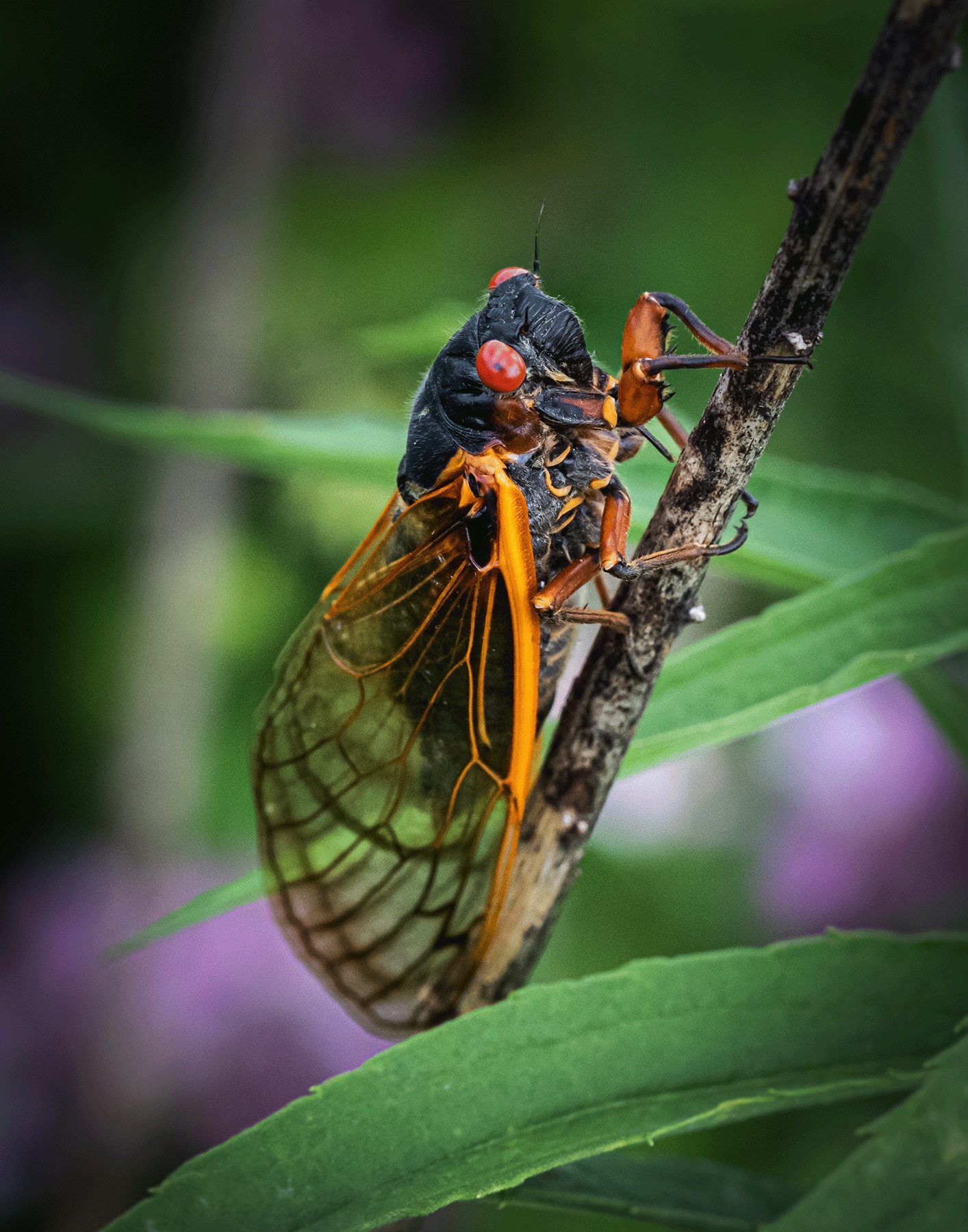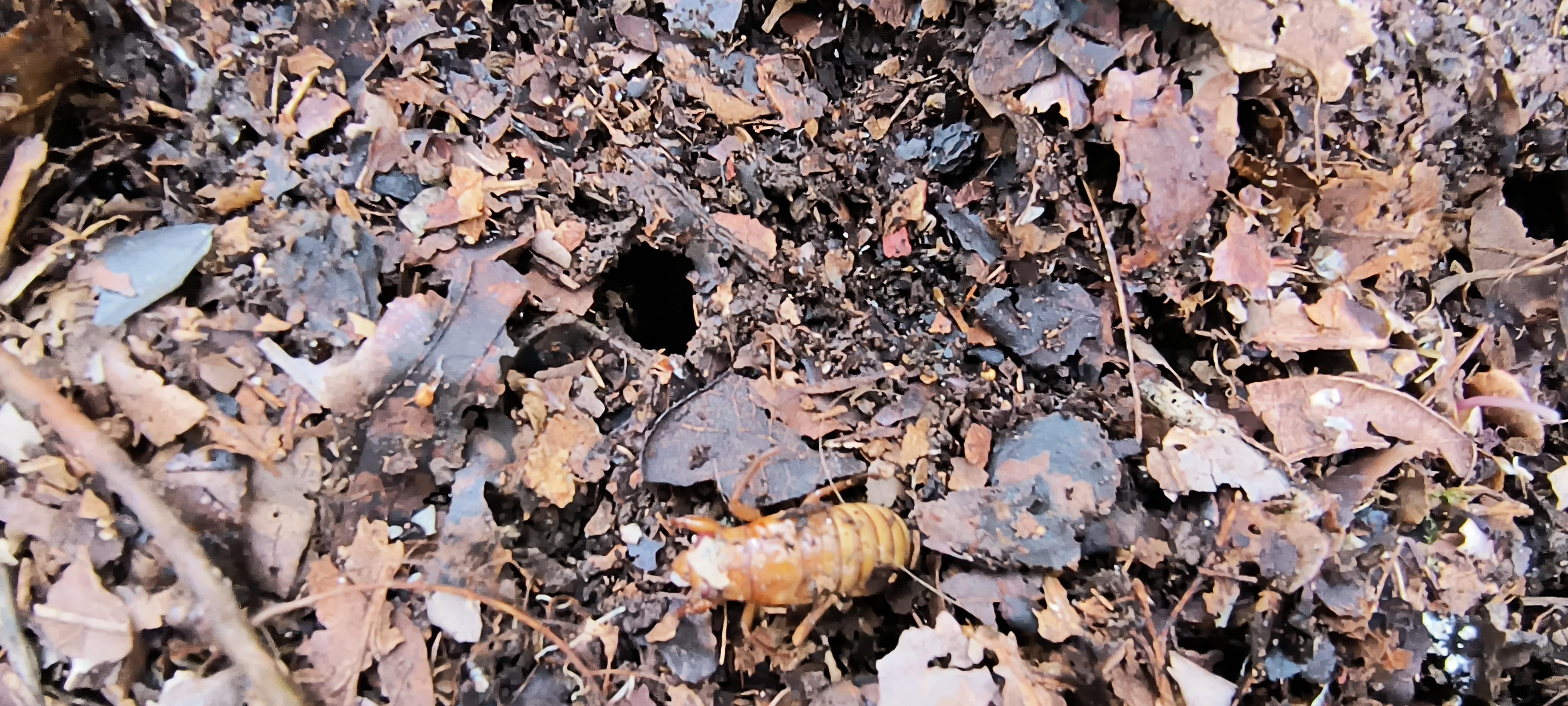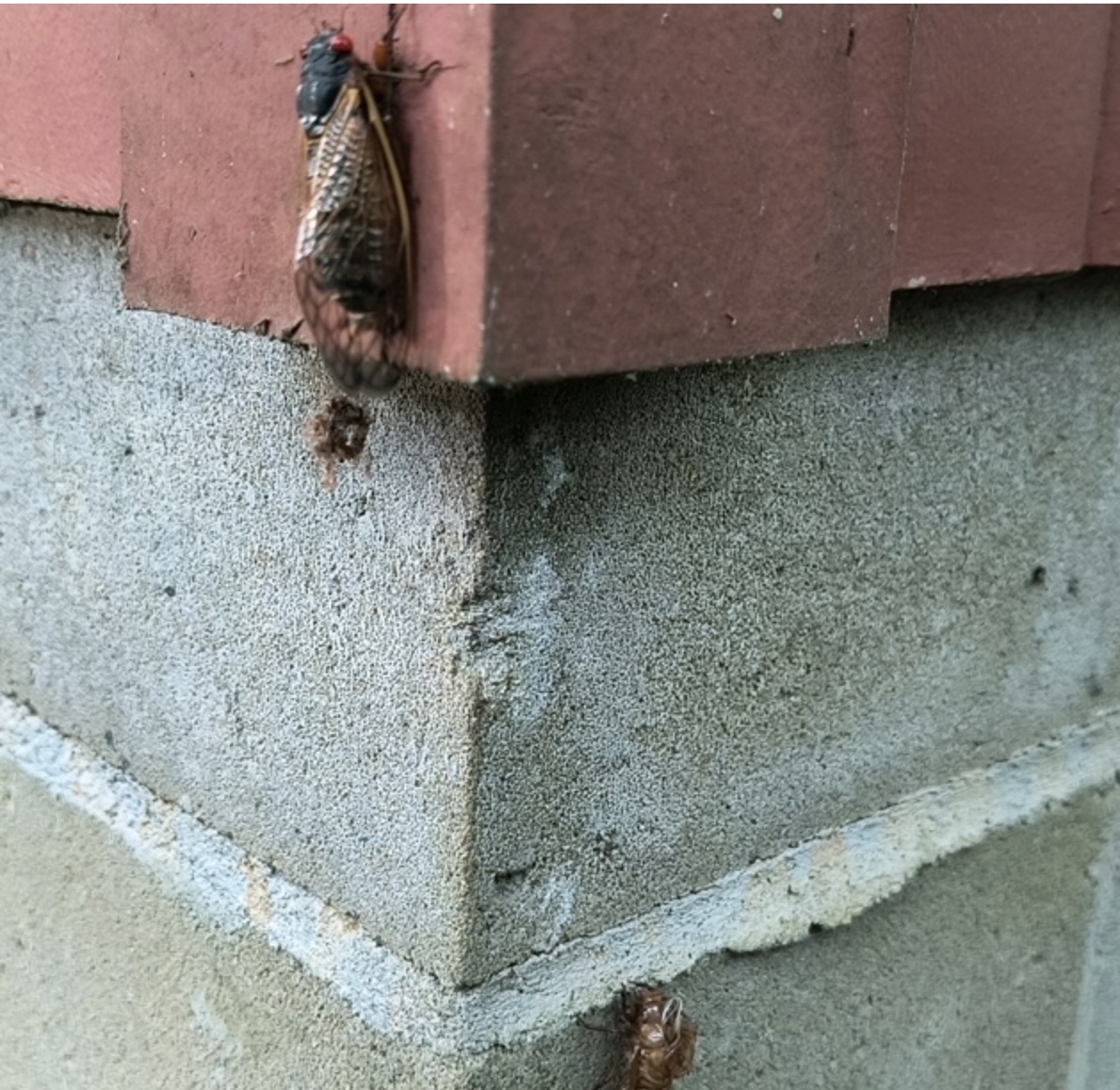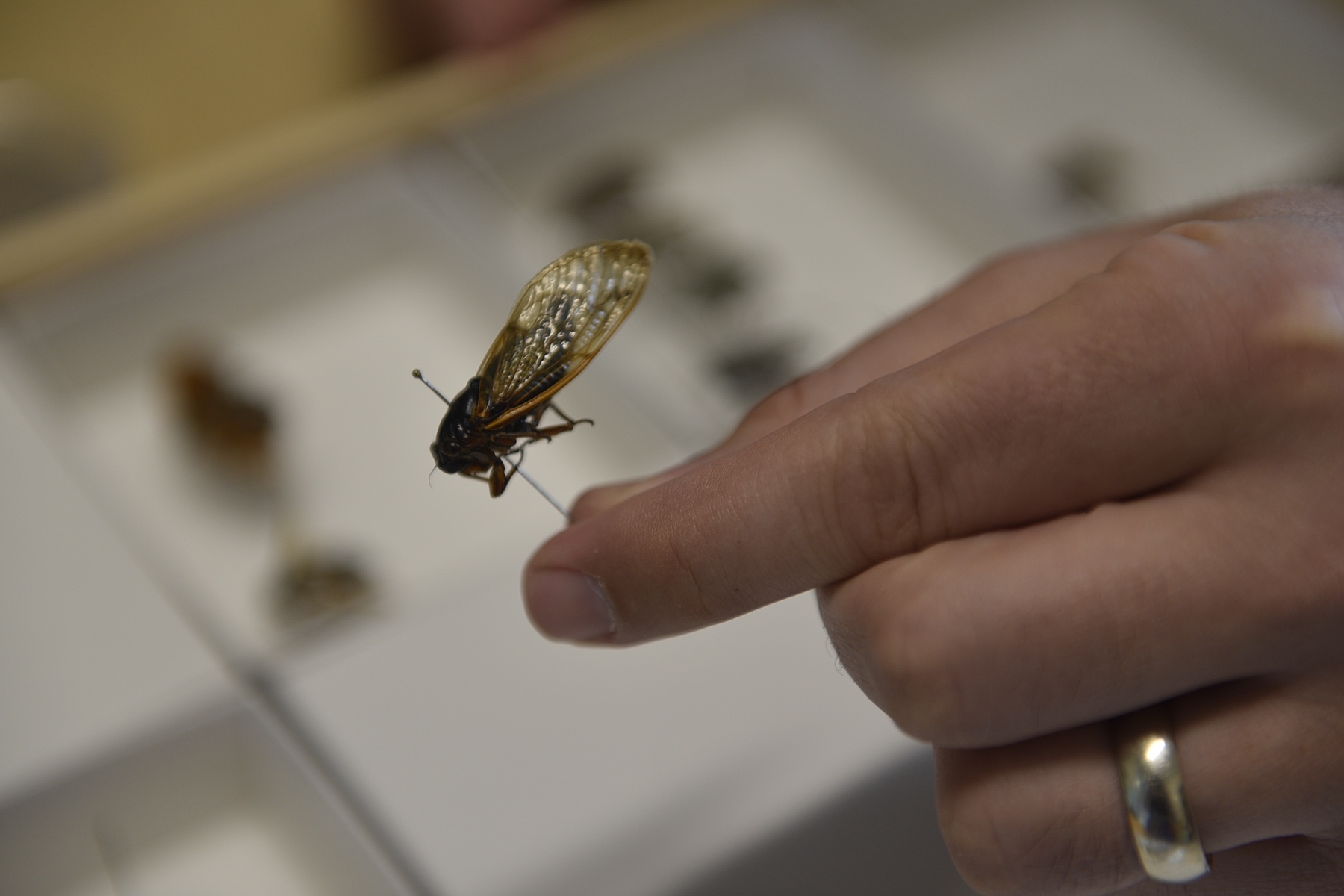The 13-year Cicadas are here—and, yes, they will be in Central Georgia
T hey don’t sting, and they don’t bite. They don’t suck blood. They won’t make you itch.
And your garden is safe.
But miniature exoskeletons might be attached to your house. You might see flickers of red-and-black buzz by. Over the weekend, you might’ve heard a monotonous droning begin.
No, your eyes are not deceiving you, and your ears are just fine.

And, despite some maps showing their arrival only in North Georgia—the cicadas ARE here. Yes, right here in Central Georgia.
How do we know? Signs of molting—empty skeletal shells are starting to be seen.
“I just found my first cicada molt. Temperatures are almost at the critical point,” said Georgia College & State University expert Dr. Bruce Snyder, associate professor of biological and environmental sciences.
Cicadas stay beneath the ground as wingless nymphs, but they aren’t hibernating. They feed off sap in tree roots and tunnel about.
When the year is right, they start burrowing up, waiting inside a hole near the surface of the ground—for just the right temperature, a process Snyder called “staging.” When soil 8 inches deep reaches 64 degrees—they come out.
That began in Middle Georgia last weekend and will continue throughout this week and next. They’ll be around for about a month.
Snyder didn’t expect the cicadas until early May.
The spring was wet and chilly. Pollen and blooms were a week late. Then, temperatures turned warm.
“They have been staging underground for weeks,” Snyder said. “Based on the weather, I expect to see them coming up now in larger numbers.”

The Great Southern Brood is thought to be the largest geographically of all periodical cicadas—seen in Maryland along the coast to Georgia and in parts of the Midwest.
Their appearance this year is particularly interesting.
For the first time since Thomas Jefferson was the U.S. President in 1803, the arrival of the 13-year Southern Brood coincides with the appearance of the 17-year Northern Illinois Brood XIII. Together, they’re expected to total a trillion periodical cicadas in 16 states.
This happens only every 221 years.

You could almost say they’re ‘adorable' with black bodies, red eyes and red-orange-veined wings.
They tend to congregate in areas with hardwood trees like oaks, maples and hickories.
A few “stragglers” come early, Snyder said, but most crawl out around the same time.
They shed their exoskeletons and noisily look for mates. They don’t eat much. They just group together in trees in a loud chorus for one big reproductive party.
They’re clumsy flyers. So, a couple are bound to smack into you. Or your windshield. You may crunch them underfoot. And your ears may ring from continuous buzzing.
“These cicada emergences are really incredible,” Snyder said “They can be overwhelming. They're very loud.”
“But I wouldn’t be worried about cicadas,” he said. “They’re harmless. They have no interest in you. You just happen to be in their space.”
In 2015, Snyder co-authored a paper in the journal Ecosphere on periodical cicadas in Kansas.
Now, he’s working with Evan Lampert at the University of North Georgia and Mac Callaham with the U.S. Forest Service to learn more about periodical cicadas during this emergence.
People can help by becoming community science data collectors. Citizens can record numbers and cicada locations using one of two apps: iNaturalist and Cicada Safari.

• Timing, how cicadas know when to emerge and if other triggers besides temperature factor in.
• Distribution, where cicadas numbers grow or shrink over time and why.
• Predator satiation, when there’s a sudden abundance of insects to eat. Birds, animals, snakes, lizards and other vertebrates become engorged. They stop eating, scientists theorize, leaving plenty of cicadas to finish mating and lay eggs, ensuring survival of the species.
• Overdevelopment, how environmental damage can eliminate entire cicada populations from one emergence to the next.
That's one reason why national forests and parks and those in our state and locally are so important. There's actually a lot of biodiversity that we're keeping safe, even if we don't see it most of the time.
 Cicada broods have been known to go extinct—like the “Floridian” Brood XXI, last seen according to Wikipedia in 1870. Snyder estimates about 12 broods have been lost in the United States.
Cicada broods have been known to go extinct—like the “Floridian” Brood XXI, last seen according to Wikipedia in 1870. Snyder estimates about 12 broods have been lost in the United States.
The Great Southern Brood XIX is one of only three 13-year periodical cicadas left. The “Baton Rouge” Brood XXII and “Mississippi Valley” Brood XXIII are not expected to reemerge until 2027 and 2028.
"They’re like everything in the ecosystem. They're an important part of that system," Snyder said. "As you lose pieces, it's like losing rivets on an airplane. The more you lose the worse it becomes."
"A lot of people don’t realize when you remove trees," he said, "you’re also affecting the things that rely on those trees for survival."
So, now’s the time to see these marvelous creatures.
Don’t confuse them with cicadas that show up every year in mid-summer. Those are brownish green and bigger, about 2 to 3 inches long. And they appear in fewer numbers.
Periodical cicadas are only about 1½ inches long. They come out less frequently, in the spring, but in TENS of MILLIONS.
So, yeah, they’ll be everywhere. And that might be a nuisance.
It’ll be louder. And it might not be the song you want to hear.
But they’re only here a short time.
They’ll mate, lay eggs and disappear.
For another 13 years.
